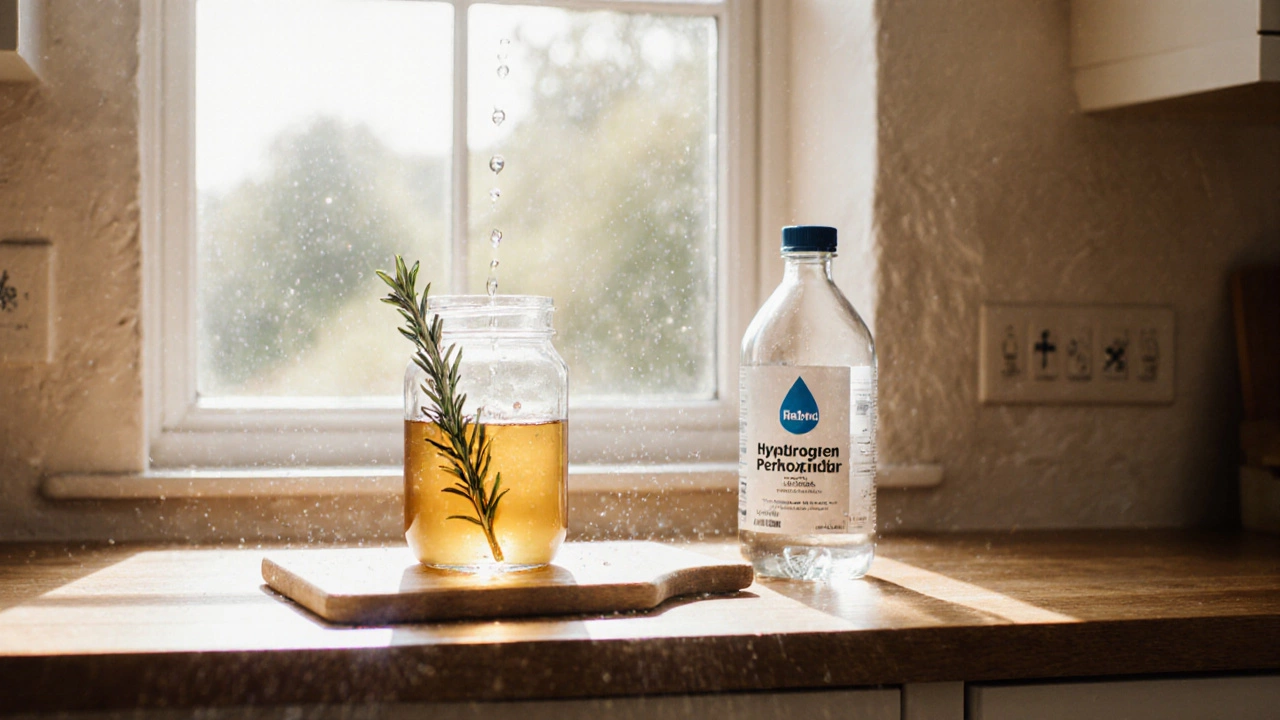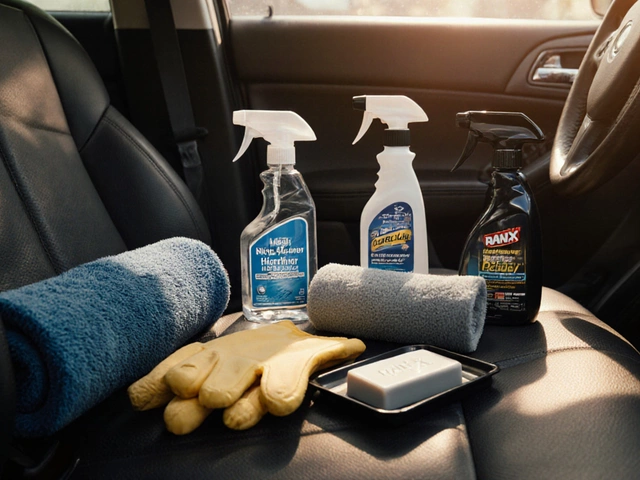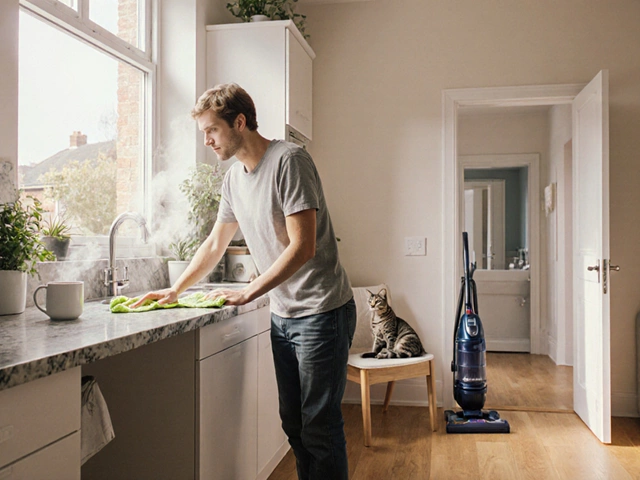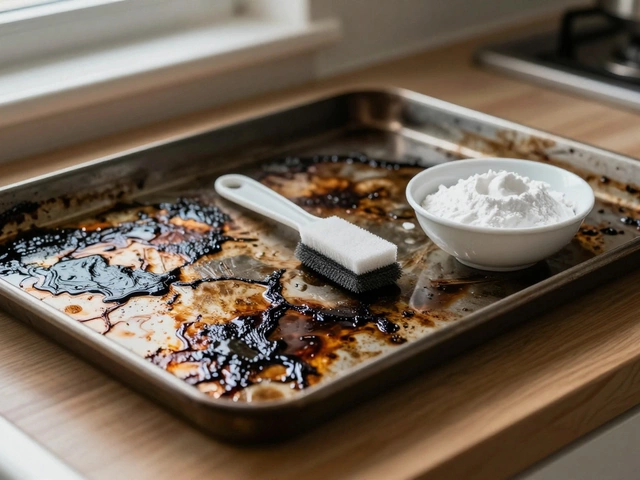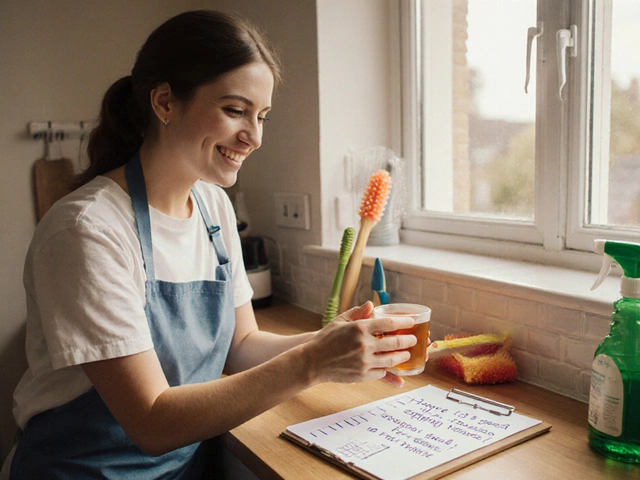TL;DR
- Hydrogen peroxide kills a wider range of germs, especially viruses and spores.
- Vinegar is great for bacteria and mold on non‑porous surfaces but struggles with tougher pathogens.
- Both are safe for most household use when diluted correctly, but hydrogen peroxide can bleach fabrics.
- For everyday kitchen cleaning, vinegar is often enough; for high‑risk areas like bathrooms or after illness, choose hydrogen peroxide.
- Combine both in a two‑step routine for maximum coverage without chemicals.
When the debate comes down to vinegar vs hydrogen peroxide, the answer isn’t a simple yes or no. Each disinfectant has its own chemistry, strengths, and limits. Below we break down what makes them tick, how they stack up against common germs, and which scenarios call for one over the other.
Vinegar is a diluted solution of acetic acid, usually around 5% acidity, traditionally used in cooking and cleaning. The active ingredient, Acetic Acid (CH₃COOH, a weak organic acid, gives vinegar its sour smell and antibacterial punch.
Hydrogen Peroxide is a clear liquid composed of water and a single oxygen‑oxygen bond (H₂O₂), typically sold at 3% concentration for home use. When it breaks down, it releases reactive oxygen species that scramble microbial DNA.
How the Chemistry Works
Both cleaners rely on oxidation, but they approach it differently. Acetic acid lowers pH, denaturing proteins and disrupting cell membranes. That works well against many bacteria and some fungi. However, the weak acid can’t penetrate the tougher coat of many viruses.
Hydrogen peroxide, on the other hand, generates free radicals (·OH) that oxidize lipids, proteins, and nucleic acids alike. Those radicals are non‑selective, so they can smash viruses, bacterial spores, and even hardy mold spores. The trade‑off is that they’re also more likely to damage delicate surfaces if used undiluted.
What Germs Do They Kill?
Here’s a quick snapshot of the microbes each agent handles well:
- Bacteria: Both are effective against E. coli, Salmonella, and Staphylococcus aureus. Hydrogen peroxide edges ahead on Gram‑positive strains that have thicker walls.
- Viruses: Vinegar shows modest activity against some enveloped viruses (like the flu), but it’s not reliable for non‑enveloped viruses (norovirus) or coronavirus. Hydrogen peroxide consistently inactivates both types when left for at least one minute.
- Fungi & Molds: Acetic acid can inhibit common kitchen mold (Aspergillus) on smooth surfaces. Hydrogen peroxide destroys mold hyphae more aggressively and can prevent regrowth.
- Spore‑forming Bacteria: Only hydrogen peroxide, especially at higher concentrations (6%-10% for professional use), can break open bacterial spores.
Safety and Surface Compatibility
Both products are considered low‑toxic, but they behave differently on everyday materials.
Vinegar is safe on most countertops, glass, stainless steel, and ceramic tiles. It can etch natural stone like marble or limestone because the acid reacts with calcium carbonate.
Hydrogen Peroxide is safe on most hard, non‑porous surfaces but can bleach colored fabrics, wood finishes, and some plastics if left too long. It’s also a mild irritant to skin and eyes, so wearing gloves is a good habit.
Both cleaners lose potency when exposed to sunlight, so store them in opaque containers and keep lids tight.

Practical Usage Tips
- Kitchen Countertops: Spray a 1:1 mix of vinegar and water, let sit 5 minutes, then wipe. For extra kill‑power on high‑risk spots (cutting boards with raw meat), follow with a spray of 3% hydrogen peroxide and let it bubble for 1 minute before rinsing.
- Bathrooms: Use undiluted hydrogen peroxide on tiles, grout, and toilet bowls. It will whiten stains and kill most bathroom germs. Avoid vinegar on grout if there’s existing epoxy sealant-it can degrade the seal.
- Fruit & Veggies: A quick dip in 1% vinegar solution helps wash off bacteria, but it won’t kill viruses. Rinse thoroughly to avoid lingering taste.
- Laundry: Add ½ cup of hydrogen peroxide to the wash to brighten whites and disinfect. Don’t mix with bleach; the reaction creates oxygen gas and can burst containers.
- Spot‑Cleaning Fabrics: Test a hidden area first. Vinegar works for deodorising, while hydrogen peroxide can remove stains but may bleach colored fibers.
Pros and Cons at a Glance
| Aspect | Vinegar | Hydrogen Peroxide |
|---|---|---|
| Primary Agent | Acetic Acid (5% typical) | H₂O₂ (3% typical) |
| Effective Against | Bacteria, some fungi, limited viruses | Bacteria, viruses, fungi, spores |
| Surface Safety | Most hard surfaces, not stone | Hard surfaces, may bleach fabrics/wood |
| Odor | Strong acidic smell (quickly dissipates) | Mild, almost scentless |
| Cost | Very low - pantry staple | Low - pharmacy bottle |
| Storage | Room temperature, amber bottle optional | Cool, dark place; avoid metal containers |
Bottom Line: Which Should You Reach For?
If you need a quick, everyday cleaner that won’t harm most surfaces, vinegar is your go‑to. It tackles everyday bacterial load and leaves a fresh scent. When you’re dealing with a sick household, want to disinfect bathroom tiles, or need to knock out stubborn mold spores, hydrogen peroxide is the stronger choice.
Many eco‑conscious households use a two‑step system: vinegar for routine wipes, then a brief hydrogen peroxide spray on high‑risk zones. This combo gives you broad‑spectrum protection without resorting to harsh chemicals.
Frequently Asked Questions
Can I mix vinegar and hydrogen peroxide together?
No. Mixing the two creates peracetic acid, which is a potent irritant and can damage surfaces. Use them sequentially - wipe with vinegar, let dry, then apply hydrogen peroxide.
Is 3% hydrogen peroxide safe for drinking water?
It’s not recommended. While low‑dose H₂O₂ is used in some water‑treatment systems, the household 3% solution can cause stomach irritation if ingested.
How long should I leave hydrogen peroxide on a surface to disinfect?
Leave it wet for at least 1 minute. For spores or tougher viruses, extend the contact time to 5 minutes.
Can vinegar remove soap scum?
Yes. The acid breaks down the calcium salts in soap scum. Spray undiluted vinegar, let sit 10 minutes, then scrub.
What’s the best way to store hydrogen peroxide?
Keep it in its original opaque container, away from heat and sunlight. A cool pantry shelf works fine.
